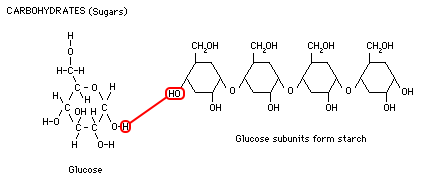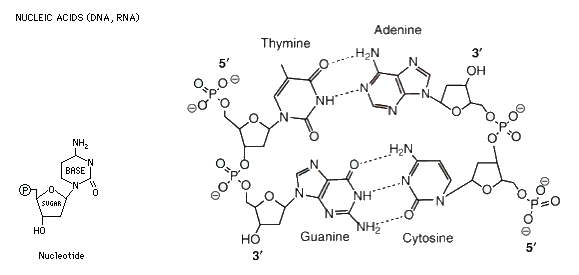OH MY.. Why Are Proteins The Most Complex Biological Molecules
The building blocks of proteins are amino acids. Amongst their functions are.

The Human Brain Is One Of The Most Complex Biological Systems And The Cognitive Abilities Have Greatly Expanded Systems Biology Molecular Biology Human Brain
The function of a protein is determined by its structure.

Why are proteins the most complex biological molecules. The structure of proteins ranges from primary to quaternary structures. Proteins are made up of long chains of amino acids. Many other proteins consist of two or more polypeptide chains that must assemble properly to form a functional complex.
See full answer below. Among all the biological macromolecules proteins have the most complex and dynamic structures. Each cell in a living system may contain thousands of different proteins each with.
The building blocks of proteins are amino acids. Proteinsare the most versatilemacromolecules in living systems and serve crucial functions in essentially all biologicalprocesses. Proteins are large complex molecules that play many critical roles in the body.
These are the complex group of biomolecules and form the main and essential component of life. They do most of the work in cells and are required for the structure function and regulation of the bodys tissues and organs. Molecular bonds determine the structures of amino acids and proteins.
There is no place in a cell which functions without proteins. Proteins are polymers composed of building blocks called amino acids of which life on Earth uses just twenty. Biological Molecules Nearly all biological molecules can be grouped into one of four general categories Table 32.
Biomolecules capable of forming complex structures. Proteins are a class of macromolecules that can perform a diverse range of functions for the cell. Proteins are the most complex biological molecules because they are made of five different elements.
Proteins are the most versatile class of molecules in living organisms. Click to see full answer. The large molecules necessary for life that are built from smaller organic molecules are called biological macromoleculesThere are four major classes of biological macromolecules carbohydrates lipids proteins and nucleic acids and each is an important component of the cell and performs a wide array of functions.
To a large extent cells are made of protein which constitutes more than half of their dry weight Table 21. These are the most important macromolecules involved in encoding transmitting and gene expression. Many are enzymes or subunits of enzymes.
Many proteins consist of just a single polypeptide chain. Collagen hemoglobin antibodies and enzymes are examples of proteins. Primary secondary tertiary and quaternary.
Proteins may be structural regulatory contractile or protective. Proteins are organized at four levels. They help in metabolism by providing structural support and by acting as enzymes carriers or as hormones.
Proteins are long chains of individual pieces called amino. Primary secondary tertiary and quaternary. Disulfide bridge bonds hold proteins together.
The Shape and Structure of Proteins. A change in the proteins activity involves a. Category General Function 1 Carbohydrates Energy source Structural material 2 Lipids Energy storage Structural material 3 Proteins Structural material Catalyze cell processes.
Proteins are made up of hundreds or thousands of smaller units called amino acids which are attached to one another in long chains. The genetic information is usually encrypted in the form of nucleic acids and is transmitted to the next generations. This is perhaps not surprising once one realizes that the structure and chemistry of each protein has been developed and fine-tuned over billions of years of evolutionary history.
Proteins are vital components to nearly every biological process. From a chemical point of view proteins are by far the most structurally complex and functionally sophisticated molecules known. They help in metabolism by providing structural support and by acting as enzymes carriers or as hormones.
Protein is used for the growth and repair of cells and can be used as a source of energy if carbohydrate and fat reserves are low. They function as catalysts they transport and store other molecules such as oxygen theyprovide mechanical support and immune protection they generate movement they transmit nerveimpulses and they control growth and differentiation. Proteins are a class of macromolecules that can perform a diverse range of functions for the cell.
Part of the reason proteins are so complex is that their building blocks are so diverse. Proteins earned their primary responsibility in cellular function even before DNA. Carbon hydrogen oxygen nitrogen and sulfur.
Peptide bonds link amino acids together in a chain. Catalysis enzymes transport storage casein contraction muscles protection. They may serve in transport storage or membranes.
Proteins are the most complex of all biological molecules in terms of their structures and functions. Proteins are organized at four levels. Proteins can interact with one another and with others molecules to form complexes.
Proteins provide most of the molecular machinery of cells. Proteins are a primary constituent of living things and one of the chief classes of molecules studied in biochemistry. Proteins are composed of amino acid monomers and have a wide variety of functions including transportation of molecules and muscle movement.
Proteins are one of the most abundant organic molecules in living systems and have the most diverse range of functions of all macromolecules.

Mixing Protein And Carbohydrates Chart Shows How Food Is Modified Into Lipids Carbohydrates And Protein Metabolizm Trenirovki Podnyatie Tyazhestej

Levels Of Protein Structure From Amino Acids To Complex Of Protein Molecule Protein Is A Polymer Polypeptide That Formed From Sequences Of Amino Kimia Protein

Biological Molecules Biology I

Cellular Respiration Oxidative Phosphorylation Complex 4 And Cytochrome C Biochemistry Chemistry Educational Videos

Cytoplasmic Receptor Steroids Are Lipids Steroids Pass Into Cell Through Diffusion Most Takes Place In Cytoplasm Biology Diagrams Molecular Biochemistry

Chemists Solve Major Piece Of Cellular Mystery Cellular Genetic Information Molecular Biology

Biomacromolecular Structures Biomacromolecular Structures
2 3 Biological Molecules Concepts Of Biology 1st Canadian Edition
2 3 Biological Molecules Concepts Of Biology 1st Canadian Edition

Pin On Microscope Activities And Lessons

Layers Of Learning Science Hands On Experiments Family Style Enzymes Biology Biology For Kids Enzymes Activity

Iucr The Protein Data Bank Biochemistry Teaching Biology Organic Chemistry Study

Mitocondrial Protein Sorting Cell Biology Nutrigenomics Biochemistry

Learn About The 4 Different Types Of Protein Structure Protein Biology Biochemistry Biology

Molecules Of Life Collection C Macromolecules Molecules Life

Properties Of Polymers Boundless Chemistry

An Overview Of The Biosynthetic Secretory And Endocytic Pathways That Unite Endomembranes Into A Dynamic Interco Cell Biology Anatomy And Physiology Physiology


Post a Comment for "OH MY.. Why Are Proteins The Most Complex Biological Molecules"